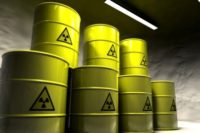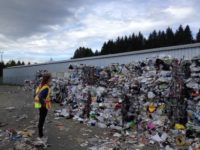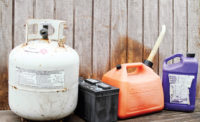Protect workers by instituting safe handling and disposal of hazardous waste

Credit: Getty Images
Hazardous waste is all but impossible to avoid in manufacturing and construction environments.
The improper handling of hazardous waste brings many potential dangers, from health hazards to environmental damage, in both the short and long term.
That’s why, legally and ethically, the handling and disposal of hazardous chemicals, gases and other materials must be managed correctly. Employers and employees alike share the responsibility to protect each other and the environment from the mishandling of hazardous waste in the workplace.
What follows is a guide to the safe handling of hazardous waste. Adherence to the guidelines promotes a safe and responsible workplace.
What is hazardous waste?
The US Environmental Protection Agency defines hazardous waste as “waste with properties that make it dangerous or capable of having a harmful effect on human health or the environment.” It is generated from sources ranging from manufacturing processes to spent batteries and can be present in gases, liquids, solids and sludges. It can be classified as corrosive, ignitable, radioactive, reactive or toxic.
Here’s a rundown on those categories:
Corrosive waste eats away at both organic and inorganic materials. Acids, for example, can blind or severely burn those who encounter them or can damage structural integrity where spills occur.
Ignitable waste can easily catch fire or explode. Solvents, fuel, fumes and even airborne dust from various construction and manufacturing operations can be dangerous when in proximity to an ignition source.
Radioactive waste contains radioactive material, which can cause a variety of health problems. It is produced by power plants, medical facilities and in research environments.
Reactive waste is dangerous when exposed to certain other materials or conditions. Such combinations might create toxic gas, cause explosions or ignite.
Toxic waste contains substances that are poisonous, harmful to human health or harmful to the environment. Some examples are asbestos, lead and mercury, along with many pesticides. Exposure to toxic wastes, whether it is present on a work site or has leached into the environment, can cause health issues ranging from cancer to birth defects.
Steps toward safely handling hazardous waste
Handling hazardous waste is a matter of attention to detail. Such materials must be properly identified, stored, transported and disposed of. Workers must be properly trained, outfitted and monitored. Records must be kept, facilities inspected and emergency response plans formulated and disseminated. Here’s a closer look:
- Identification: Identifying and classifying materials based on their physical and chemical properties dictates handling, storage and emergency response protocols. Standardized labeling is crucial to ease of use.
- Storage: At its most basic, storage should include proper ventilation and spill containment, along with fire suppression systems or equipment. Proper segregation of reactive materials is critical. Access to storage areas should be tightly controlled and inventory tightly monitored.
- Transportation: Adherence to local, state and federal regulations will guide the transport of hazardous waste. Those regulations will dictate the vehicles, amounts of waste and labeling appropriate to any given material.
- Disposal: More regulation will guide the method of disposal, be it incineration, landfilling or recycling.
- Training: Employees must know immediate and long-term risks associated with the waste they are handling. They should understand their roles and responsibilities, plus those of their immediate coworkers. They should be trained to use the correct personal protective equipment (PPE), such as respirators, goggles, gloves and boots. Plus, as regulations evolve, a rigorous training and education program will keep pace so employees remain current on best practices.
- Monitoring: Observing the work lets you know protocols are being followed from transport to PPE. Documenting the waste’s journey through your facility will meet compliance guidelines and protect you against liability. Inspection further aids compliance and reveals gaps in training, infrastructure and equipment.
- Emergency Response: A proper emergency response plan should be part of employee training and should include plans for notifying the authorities, evacuation and containment.
Don’t waste time
Beyond a legal necessity, the proper handling of hazardous waste is a moral obligation. Any protocols you put it place are designed to protect your employees, the public, the environment and your property. If you have any questions, seeking out government infrastructure consulting is one way to ensure you’re creating a safety culture that will help sustain your employees, your business and the planet.
Sources
https://www.epa.gov/hw/learn-basics-hazardous-waste#hwid
https://lonestarhazmat.com/safety-protocols-and-practices-for-handling-hazardous-waste-disposal/
Looking for a reprint of this article?
From high-res PDFs to custom plaques, order your copy today!







